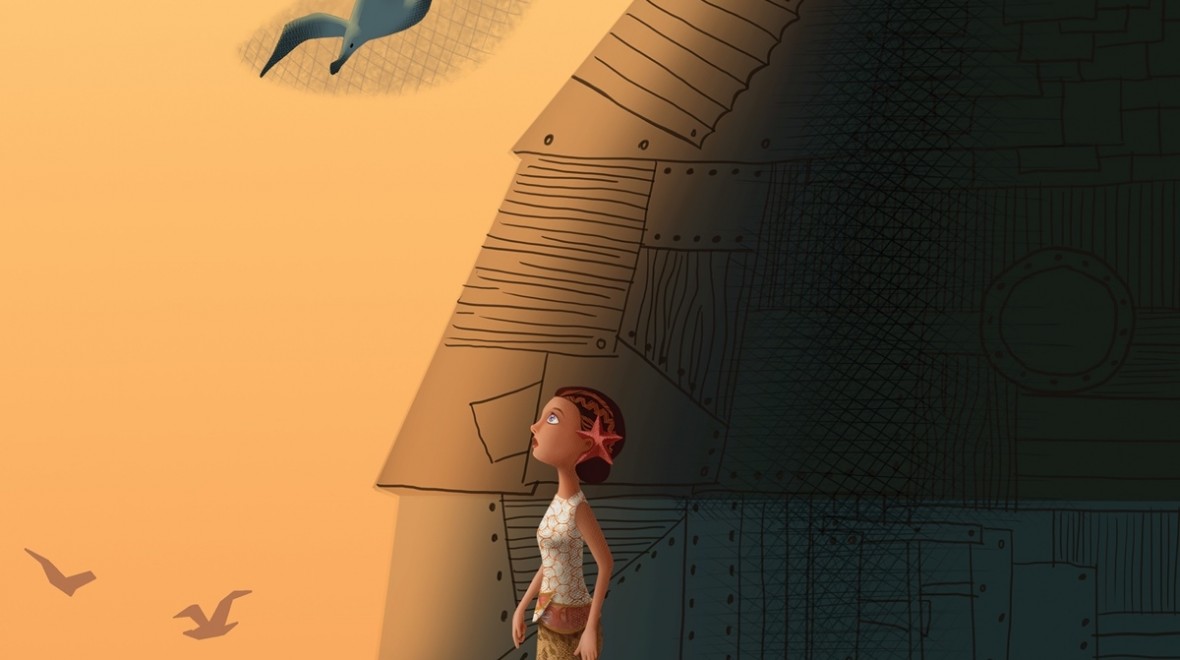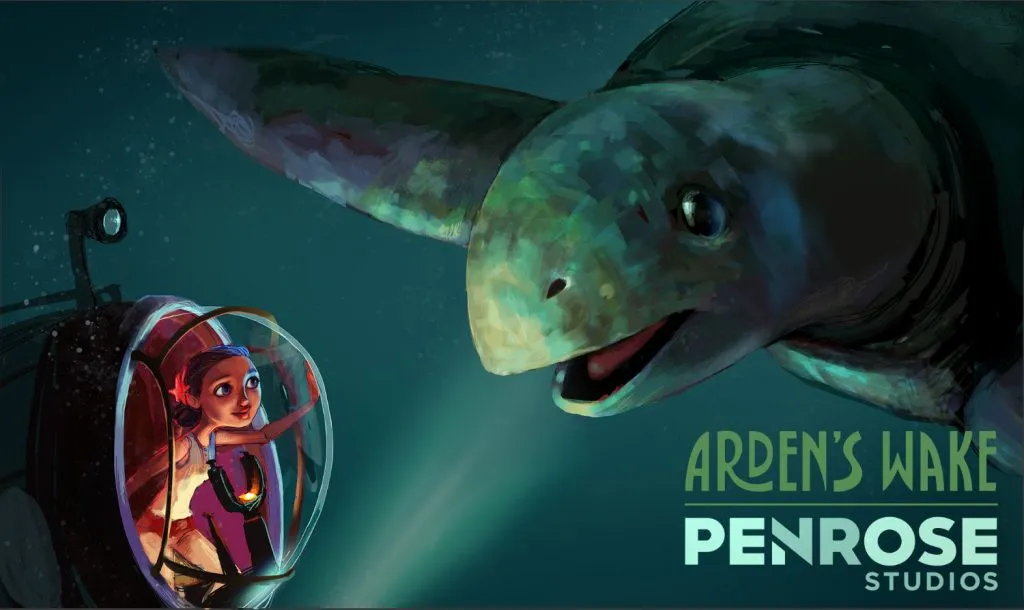The fourth production from VR studio Penrose, Arden’s Wake: Tide’s Fall, is debuting at Tribeca and it touches upon well worn territory for this team. Namely, it’s a story about the relationship between parent and child, coping with loss and, ultimately, moving on. Heavy topics for the film’s deceptively charming visuals, true, but the studios’ growing competence in this emerging field of narrative steers the viewer through some difficult drama with aplomb.
Arden’s Wake is the story of a young girl living in a flooded world. In the first installment, Prologue, we met Meena — now voiced by Alicia Vikander of Lara Croft fame — a young girl living in an unlikely paradise with her father who carries the weight of the old world on his shoulders. When Dad is lost to the ocean, Meena breaks his golden rule and dives in after him in a rushed rescue mission that seemingly does more harm than good.
In a press release announcing the second episode, Penrose noted it wanted to bring ‘important issues to the surface’ with its storytelling. A cute pun, perhaps, but Tide’s Fall wastes little time delivering on that statement. Any preconceived notions drawn from the film’s whimsical art style are quickly tossed aside here as some harsh truths are exposed. The first scene is crucial, taking Meena back through her childhood memories and digging up some aspects she’d have rather left under the ocean.
In an email, CEO Eugene Chung said Penrose is focused on telling “stories in a relatable way and make the viewers think about societal issues that impact many, if not all of us, in some way.”

What makes Arden’s Wake work so well is the freedom it gives the viewer. It’s a concept many still struggle to grasp in VR filmmaking, but Penrose holds onto it tight. Rather than constantly wrestling for your attention, Tide’s Fall’s plays out over a handful of long shots that don’t just allow the viewer to explore and investigate, but practically invites it.
It’s unconcerned with the camera colliding with the environment, for example, simply making walls fade from view as you approach them. The diorama-style sets, meanwhile, essentially give you a continuous wide-angle shot, making it hard to miss any action and, at the same time, bring intimate moments closer to you, sometimes even casting you as the growing barrier between father and daughter. Spatial storytelling like this can really help VR shine, and this is a great example of that.
Likewise, scale plays just as important a role as space. At times, it’s hard to resist the urge to scoop the puppet-sized characters up and shield them from the dangers surrounding them (I actually tried to do this early on in the Prologue despite the film being entirely non-interactive). Chung is keenly aware of this direction. “Many of Penrose’s characters are miniatures, like toys, and we dreamed as children of our toys coming alive as our companions,” Chung said. “This is the promise that interactive characters can bring, and we’re excited to develop further on this.”

Just as Tide’s Fall demonstrates the talented artistry on display at Penrose, it’s also a great showcase for the company’s “proprietary” review tool Maestro, which helps the creators “anticipate the variety of ways the film will be absorbed and create the story accordingly.”
As for a release of Tide’s Fall on consumer headsets, Penrose isn’t handing out any specifics yet. Keep your eyes peeled, though; this is one to watch.


























